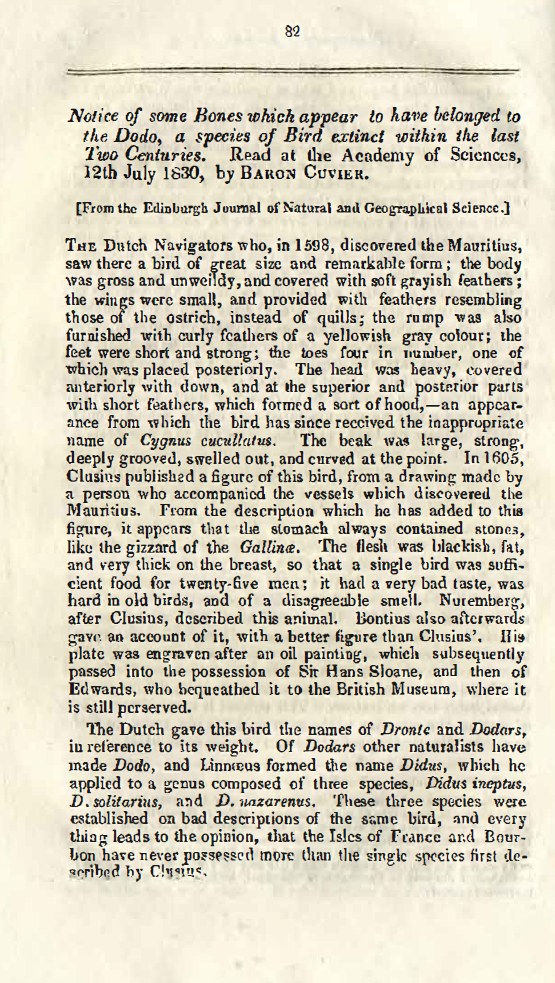Notice of some bones which appear to have belonged to the Dodo, a species of bird extinct within the last two centuries
read at the Academy of Sciences,12th July 1830, by Baron Cuvier
DOI:
https://doi.org/10.21504/saqj.15.2604Keywords:
Dodo (Didus ineptus), Dodo, Mauritius, Extinct birds, Baron Cuvier, Paleontology, Julien Desjardins, 19th-century zoology, Flightlessness, Gallinæ, Avian classification, Cygnus cucullatus, Didus ineptus, D. solitarius, D. nazarenusAbstract
This paper (from the Edinburgh Journal of Natural and Geographical Science) reports Baron Cuvier’s announcement to the Academy of Sciences regarding the discovery of several fossilised bird bones from the Isle of France (Mauritius), believed to belong to the extinct Dodo (Didus ineptus). The remains—including a cranium, sternum, and several limb bones—were sent to Cuvier by M. Julien Desjardins and found beneath beds of lava alongside tortoise fossils. Cuvier compared these remains to previously known Dodo specimens (skins and skeletal fragments held in the British and Ashmolean Museums) and concluded that their structural features—particularly the sternum with its prominent crest and the form of the cranium and tarsus—indicate close affinity with the Gallinæ (fowl-like birds).
During the ensuing discussion, M. de Blainville disputed Cuvier’s classification, proposing that the Dodo was more closely related to vultures or palmipeds (penguin-like birds), while M. Geoffroy Saint-Hilaire suggested it might represent a transitional form linking the Gallinæ and vultures. Cuvier maintained that the Dodo was flightless but heavily muscled, consistent with historical accounts. The paper thus provides one of the earliest anatomical analyses supporting the Dodo’s place among large, terrestrial, flightless birds.
Downloads

